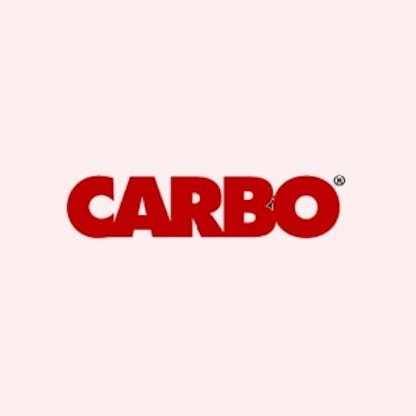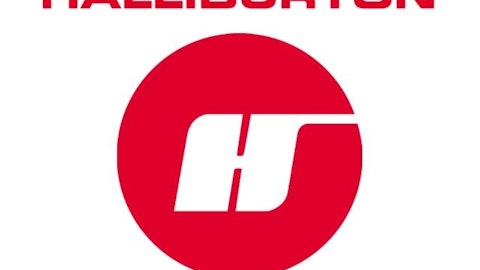
What we’re looking for
The graphs you’re about to see tell CARBO Ceramics Inc. (NYSE:CRR)’s story, and we’ll be grading the quality of that story in several ways:
Growth: Are profits, margins, and free cash flow all increasing?
Valuation: Is share price growing in line with earnings per share?
Opportunities: Is return on equity increasing while debt to equity declines?
Dividends: Are dividends consistently growing in a sustainable way?
What the numbers tell you
Now, let’s take a look at CARBO Ceramics Inc. (NYSE:CRR)’s key statistics:

CRR Total Return Price data by YCharts
| Passing Criteria | Three-Year* Change | Grade |
|---|---|---|
| Revenue growth > 30% | 68.2% | Pass |
| Improving profit margin | 0.1% | Pass |
| Free cash flow growth > Net income growth | 153.2% vs. 68.3% | Pass |
| Improving EPS | 69.2% | Pass |
| Stock growth + 15% < EPS growth | 29.6% vs. 69.2% | Pass |
Source: YCharts. * Period begins at end of Q1 2010.

CRR Return on Equity data by YCharts
| Passing Criteria | Three-Year* Change | Grade |
|---|---|---|
| Improving return on equity | 9.0% | Pass |
| Declining debt to equity | No debt | Pass |
| Dividend growth > 25% | 50.0% | Pass |
| Free cash flow payout ratio < 50% | 30.3% | Pass |
Source: YCharts. * Period begins at end of Q1 2010.
How we got here and where we’re going
CARBO Ceramics Inc. (NYSE:CRR) comes through with flying colors, earning only the second perfect score ever awarded by this analysis (read about the other perfect score here). The company came very close to missing one point, but that just means that it should be a simple matter to maintain that one grade the next time we look at the company. This is an outstanding performance, but can CARBO Ceramics Inc. (NYSE:CRR) keep up the progress? Let’s dig a little deeper to find out.
Despite making many of the right moves, CARBRO has struggled to prop up its share price, due to slowdown in well drilling activity since the collapse of natural gas prices several years ago. Costs of delivery have also been on the rise as CARBO Ceramics Inc. (NYSE:CRR)’s customers shift from nat-gas to oil drilling, which resulted in a 20% drop in net income last year. A pricing discrepancy between oil and natural gas, and between domestic and international nat-gas pricing, ought to become a driving force for liquefied natural gas exports, which are supposed to start in the next few years. A steady outflow of natural gas to international markets will support higher levels of drilling activity, bringing more production for CARBO.
Last year, CARBO made almost half of its total revenue from just two customers: Halliburton Company (NYSE:HAL) and Schlumberger Limited. (NYSE:SLB). A dependence on major players can be part of the game in this energy niche, as much of the onshore drilling services industry is in fact dominated by Halliburton Company (NYSE:HAL) and Schlumberger Limited. (NYSE:SLB). However, CARBO’s deepwater proppant could help it diversify in a big way, provided the company can handle what are sure to be more bothersome logistics problems than already exist with its land-based delivery network. Creating more distribution hubs closer to oil fields can help CARBO reduce its transportation costs and further reduce its dependence on the big two’s infrastructure.
Hi-Crush Partners LP (NYSE:HCLP) and U.S. Silica Holdings Inc (NYSE:SLCA) could also pose a threat to CARBO’s higher-end products. CARBO has worked feverishly to convince drillers that ceramic proppants are much stronger than sand, and can withstand the high temperatures and pressures of deep, fractured wells. Since Hi-Crush Partners LP (NYSE:HCLP)’s IPO, however, it does appear that the tide has shifted to sand, as Carbo’s revenues have declined while Hi-Crush and U.S. Silica Holdings Inc (NYSE:SLCA) have gained. Increased competition from a number of Chinese companies that have flooded the domestic market with cheap ceramic proppants is also a danger to CARBO’s higher-quality products, provided that the cut-rate ceramics are actually up to the task.
The worldwide proppant consumption market (comprised of sand, resin-coated sand, and ceramics), has increased from three billion pounds in 2000 to more than 17 billion pounds this year. CARBO has over two billion pounds of proppant manufacturing capacity, so it alone makes up about an eighth of global proppant supply. It is also expanding production capacity by nearly a billion pounds every year to seize on worldwide growth, as it should — in 2012, 22.5% of CARBO’s sales came from international markets, which grew 12% compared to last year. Domestic sales, on the other hand, were essentially flat from the year before. International competition from other ceramic proppant manufacturers could crimp CARBO’s growth, as less than 10% of the company’s current manufacturing capacity is located outside of the United States. That must be handled quickly, if CARBO wishes to become a major player in offshore drilling.
Putting the pieces together
Today, CARBO Ceramics has many of the qualities that make up a great stock, but no stock is truly perfect. Digging deeper can help you uncover the answers you need to make a great buy — or to stay away from a stock that’s going nowhere.
The article Is CARBO Ceramics Destined for Greatness? originally appeared on Fool.com and is written by Alex Planes.
Fool contributor Alex Planes has no position in any stocks mentioned. The Motley Fool recommends Halliburton. The Motley Fool owns shares of HI-CRUSH PARTNERS LP (NYSE:HCLP) UNIT LTD PARTNER INTS and U.S. Silica Holdings.
Copyright © 1995 – 2013 The Motley Fool, LLC. All rights reserved. The Motley Fool has a disclosure policy.




